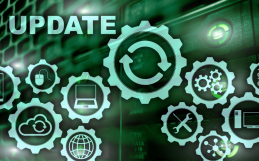We recently sat down for a Q/A with Giles Crouch, our webcast guest speaker for Spaces, Technology, and People: How the Digital Workplace Impacts Culture and Governance. The informative session naturally sparked some great questions, the best of which we have included below.
We hope you can distill some actionable insights and further deepen the connection between technology and people at your organization.
You cited a PWC study that said 90% of executives believe their company pays close attention to employee technology needs during your presentation, while only 53% of employees say the same. How do we close that gap?
Giles: You’ve got to bring HR, IT, and management to the table. IT’s job is to save the company money – that’s essentially the role of the CIO. However, they also play a part in finding new revenues through technology.
If you want to close that gap, all three groups must come together and look at the alternatives. Rather than the first decision being “let’s get the cheapest laptop,” it needs to be “how do we think about the right tools to keep the right people in their seat.”
That’s interesting. How would you then say we close the gap between HR and IT that sometimes exists? Is that a leadership mandate, especially for someone responsible for technological leadership?
Giles: Usually, I find that someone comes in from outside the organization to help make that happen. First, you must create awareness within the organization that there is a difference between information technology and information management.
Many small to mid-size organizations don’t understand the difference, but you can start with small activities like a lunch and learn. You can also educate through a company town hall, highlighting where IT ends, and Information Management begins.
The second recommendation I have is to create an information or knowledge management team. Essentially you have different people from different parts of the company. They come together and form a community of practice, where their responsibility is to close that gap. Together, they encourage others to find better ways to share, develop, and manage their information.
Ultimately, you want to think of your culture stack the same way you think about your marketing tech or business operations stack.
What are some strategies for navigating culture buy-in? What piece of advice could you give, such as a T-shirt slogan?
Giles: One of the best models I’ve seen for change management is the ADKAR (Awareness, Desire, Knowledge, Ability, and Reinforcement) model. Get someone in the organization certified in change management, so there’s a level of expertise in the organization.
There is no start and endpoint for change management. It’s always an ongoing process. Like with agile development, you’ve got to be patient. It takes time, and you must keep your organizational objectives in mind throughout.
Also, it’s essential to have clear milestones, with many small wins along the way. Even if it’s a tiny improvement in customer service or marketing, these victories will help drive momentum. Having a progress line and a goal that people can visualize makes all the difference.
That’s great. During your presentation, a stat you brought up was that 83% of employees don’t feel like they’re part of the company’s growth or change. Often, the opposite is true, but nobody is taking the time to connect those small wins and the more significant strategic milestones.
Giles: Absolutely. Although senior management is responsible for strategic growth, the people on the front line drive the business and complete the jobs that make the company money. They are the ones that hear from the company‘s supply chain and clients. They need to be listened to because their insights impact proper strategy.
Completely agree. One of the phrases we heard recently was “nothing about us without us.” It’s this thinking that we must consider when creating organizational change, correct?
Yes. Embrace the focus group. Talk to people who are getting stuff done, especially when it comes to CX (customer experience).
Many of today’s enterprise business functions already have a project management function, such as business administration and finance. Do you see digital governance having its seat at the boardroom table, or is it more a collective responsibility?
Giles: That’s a great question. I would say it’s a little of both. Management as a whole has to consider digital governance because it impacts each part of the company. My recommendation is to have a standing committee that is responsible for IT services and data governance. Their job is to look at significant expenditures, privacy laws and ensure compliance.
Their other responsibilities include risk mitigation and data management, protecting against a data breach, and ensuring the company has the proper insurance to cover the Board of Directors in light of the new laws.
If you missed the webcast or want to watch it again, you can do so here. If these insights have given you some ideas and you would like to talk to a team member contact us today – info@itweapons.com
Related Posts





